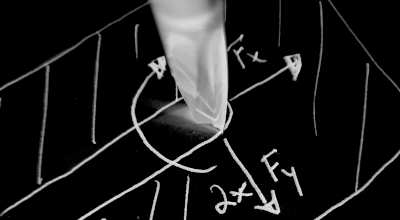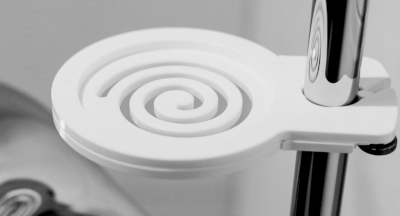Vorverstärker-Design
Auswahl der Entkopplungskondensatoren
Einige technische Hintergrundinformationen über die Auswahl der Komponenten für meine Vorverstärkerplatine.
Warum Entkopplung nötig ist
Mit Entkopplung meine ich in diesem Fall speziell die Gleichstromentkopplung (DC-Entkopplung). Der Vorverstärker muss sowohl von der Quelle (dem Musikinstrument) als auch von der Senke (dem Endverstärker) entkoppelt werden. Dies hat mehrere Gründe:
- die Versorgungsspannungen der drei Partner können unterschiedlich sein (z.B. 9V Gitarrenspeisung, 18V Vorverstärker, 52V Endstufe) und ich möchte nicht versehentlich einen von ihnen kurzschließen
- Ausgangsimpedanz, d.h. die Belastbarkeit der Ausgangsstufe könnte begrenzt sein. Wenn ich einen niedrigen Eingangswiderstand z.B. direkt an den Tonabnehmer einer Gitarre anschließe, kann es sein, dass ich überhaupt kein Signal herausbekomme, weil die Quellenspannung zu stark einbricht.
- Rauschunterdrückung durch elektrische Entkopplung
Warum Kondensatoren die Aufgabe übernehmen können
Es gibt mehrere Möglichkeiten, Schaltungen elektrisch zu entkoppeln. Man kann einen Optokoppler verwenden, um zwei Schaltkreise vollständig (d.h. galvanisch) voneinander zu trennen. Damit wird nur das erwünschte Signal zwischen den Schaltkreisen durchgelassen. Oder man verwendet - wie in meinem Fall - einen Kondensator, um nur Wechselströme durchzulassen und Gleichstrom zu unterdrücken.
Wie funktioniert das?, fragen Sie? Nun, ein Kondensator funktioniert ein bisschen wie ein Wassertank. Wenn man eine konstante Spannung (Druck) anlegt, füllt sich der Tank bis zu einem gewissen Grad. Wenn dieser Pegel erreicht ist, fließt kein Volumenstrom mehr, weder rein noch raus. Variiert man nun aber die Spannung um einen statischen Pegel (Wasserdruckschwankung), so wird man wieder einen Volumenstrom messen, der in den Tank hinein- und herausfließt.
Genauso verhält es sich mit dem Kondensator. Wenn man ihn in Reihe mit einer Senke schaltet, wird er nur dann Strom durchlassen, wenn sich der die Eingangsspannung ändert.
Typ des Entkopplungskondensators
Keramik-Vielschichtkondensator, Polypropylen-Kondensator, Elektrolytkondensator…? Nach Lektüre dieses Leitfadens von Texas Instruments habe ich verstanden, dass es in diesem Dokument nur um Verzerrungen geht. Die Verzerrung würde am stärksten am Instrumenteneingang vor dem Vorverstärker Einfluss ausüben, da dieser von beiden Verstärkerstufen verstärkt wird. Bei der Verwendung eines Elektrolytkondensators sollte eine Vorspannung angelegt werden, um die Verzerrung im unteren Frequenzbereich zu verringern. Bei meinem Design ist die Vorspannung 1/2 von VCC, also noch höher als die in der Anleitung verwendeten 5V - ich denke, ich werde mit einem “billigen” polarisierten Aluminiumkondensator auskommen um die Verzerrungen THD+n gering zu halten.
Es gibt noch eine andere Sache, die ich bei Mehrschicht-Keramikkondensatoren (MLCCs) festgestellt habe: Wenn die Lautsprecher bei hoher Vorverstärkung nicht angeschlossen sind, spielen die von mir verwendeten Endstufen immer noch Musik! Wie kommt das? Die Endstufenplatine verwendet MLCCs, die wie Piezoaktoren wirken. Ihre Vibration wird durch die Platine, auf der sie montiert sind, verstärkt, was einen gewissen Schallpegel ergibt. Verrückt. Weitere interessante Details finden Sie im EDN-Blog oder - in einem weiteren Texas Instruments-Leitfaden.
Kondensatorgröße
Um die Größe des Kondensators zu beurteilen sind einige Aspekte zu berücksichtigen:
- Ein größerer Kondensator senkt meine untere Grenzfrequenz
- Ein größerer Kondensator belastet die Eingangsquelle aufgrund von Ladungsverlusten stärker
- Ein größerer Kondensator kostet mehr, insbesondere die hochwertigen Kondensatoren.
- Ein größerer Kondensator kann einen größeren Platzbedarf haben.
Ich wollte eine untere Grenzfrequenz von <20Hz für volle HiFi-Fähigkeit. Da dies bereits der -3dB-Punkt ist, wählte ich einen noch niedrigeren Wert von 15Hz, berechnet über \(f=\frac{1}{2 \pi RC}\). Bei einer Eingangsimpedanz von 10kOhm (der Wert des Widerstandes, der an die virtuelle Masse geklemmt wird) ergebe ich eine Zielgröße des Eingangskondensators von 1µF.
Bei diesem Kondensator wird die Eingangsquelle wesentlich stärker durch den Eingangswiderstand von 10kOhm beeinflusst als durch den Kondensator mit seinem niedrigen Serienwiderstand (ESR) von einigen hundert mOhm, so dass der gewählte Wert in Ordnung ist.
Für den Ausgangskondensator ist die Berechnung ähnlich. Die Endstufe hat eine Eingangsimpedanz von 20kOhm, so dass die untere Grenzfrequenz von 17Hz bereits mit einem 0.47uF Kondensator erreicht wird. Um die Wertunterschiede in Grenzen zu halten, habe ich mich auch hier für den 1µF entschieden.



